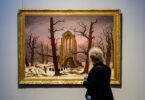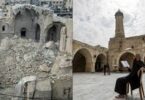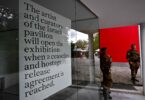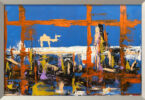F.P. Report
PESHAWAR: The historical Qissa Khwani bazaar, which attained worldwide recognition for being the ancient market of South Asia famous for its storytellers, having rich cultural diversity, Mughal era architectural buildings, aroma of food cuisines, and aromatic Qahwa (green tea) required face-lifting and renovation after its infrastructure was badly affected owing to some worst incidents of terrorism during the period from 2001-13.
Located in the heart of Peshawar near historical Chowk Yadgar, Ghanta Ghar and Balahisar Fort, the Qissa Khwani Bazaar remained a key trade and cultural center where international merchants of subcontinent, Afghanistan and Central Asia stayed at nights and swapped tales of love, culture, art & architecture, music and each others’ traditions.
The international visitors enjoyed mouth-watering Chaplli Kabab, Kabali Polao and Mutton curry along with aromatic green tea served in small cups while sitting in hammock charpoys in primitive Qahwa stalls with enthralled local people.
During its peak days, the bazaar served as a campground for trade caravans of merchants from Delhi, Amritsar, Lahore, Kabul, Dushanbe, Ashgabat and Tashkent who used to enter the city’s gates to unload their merchandise.
Thus, the unique tradition of storytelling and Qahwa Khwani became an integral part of Qissa Khwani culture, which is still continuing despite passage of so many centuries.
The primordial Bazaar starts from Kabuli Gate Khyber Bazaar and it takes only 12 minutes to see its centuries old architectural buildings, artisans shops, food restaurants and primitive Qahwa Khanas that witnessed vigor and onslaught of different warriers, kings and conquerors including Muarayans, Greeks, Scythians, Kushans, Mughals, Sikhs, Afghans and British who marched to the subcontinent through historic Khyber Pass.
The tourists can also take glimpses of the ancestral house of Bollywood super stars including Yousaf Khan alias Dalip Kumar located at Mohallah Khudadad, Qisakhwani besides legendary actor Shah Rukh Khan and Kapoor family residences in its vicinity.
The arched white marble monument erected in middle of the bazaar to honor all those killed in Qissa Khwani massacre by British troops in 1930, also remained centre of attractions for many.
The British Commissioner of Peshawar, Herbert Edwards had great love for Qissa Khwani who called it the Piccadilly of South Asia.
“Following creation of Pakistan, its tea stalls were centre of political discussion where locals exchanged views about the country’s political situation, Mohtarma Fatima Jinnah-Gen Ayub Khan Presidential Election, 1965 Pak-India war, OIC summit at Lahore in 1974 besides a number of sports and cultural events during 1960-75,” recalled former Information Officer, Misal Khan (80) while talking to APP.
He said storytellers and musicians with traditional Rabab with Tabla staged culture programs and enthralled visitors.
Qissa Khwani had witnessed a sharp decrease in arrival of foreign tourists during 2001-13 when terrorists targeted this culture hub of Peshawar that claimed so many precious lives including Senior Minister Bashir Ahmed Bilour in 2012 and CCPO Malik Muhammad Saad Shaheed in 2007.
The terror attacks made an adverse effect on its culture, business and infrastructure outlook besides affecting Qahwa business.
However, the resilience and courage of its residents and shopkeepers negated the nefarious designs of enemies of peace and culture and continued their business despite significant shortfall in their profits.
“In spite of economic losses, we continued our business even in those days when people were afraid to visit this ancient market,” said Fazlur Rehman, owner of Mohmand Qahwa Khana at Qissa Khwani while talking to APP.
“Making Qahwa is my passion which I inherited from my father in 1970. Majority of the visitors ask for green tea ‘Qahwa’ while many request for green tea with milk locally Known as ‘Sheen Da Payo’ a special tea item of Qisakhwani” Fazal said.
In recent years, he said, a significant increase in tourists’ arrival has been witnessed at Qissa Khwani that shined Qahwa business, adding, domestic travelers from Swat, Chitral and Dir Upper were being seen in substantial number these days due to cold weather conditions.
Fazal said the culture of storytelling continued even today as visitors exchanged stories during their stay at Qahwa Khanas.
“I came from Dir district to enjoy Mutton curry of famous Namak Mandai and Qahwa of Qisa Khwani market,” Engr Khushal Khan (22), a resident of Dir Lower district told APP.
“My visit to Peshawar remains incomplete without visiting this historic street for Qahwa.”
He said “Qisa Khwani was the identity of Peshawar and solid efforts were required to preserve its cultural heritage, architecture and artwork and substantial revenue could be generated by maintaining the beauty and heritage of this historic bazaar.
Shaukat Ali Khan, Chairman Central Organization for traders KP said a substantial amount i.e Rs 37, 240 per 50 KG are being spent on import of green tea mostly from Vietnam and this amount could be saved by facilitating investors to establish farms of green tea.
He said climate conditions of Hazara and Malakand divisions were ideal for tea cultivation and urged govt to give special financial incentives to investors for purchase of machinery for tea cultivation and harvesting.
Sajjad Hameed, GM TCKP told APP that ‘Cultural Heritage Trail” project has been completed in 2018 in Peshawar under which 500 meters long trail from ancient Ghanta Ghar to Gor Gathri was renovated. Besides centuries-old buildings, houses and shops were restored to their original grandeur.
The heritage trail started at historical Ghanta Ghar and passes through ancient Mohallah Sethian with a number of beautiful houses constructed by Sethi family back in 1880s and was center of attraction for art lovers.
The project has immensely helped in renovating and refurbishing the outer appearances of 85 heritage buildings and structures of Mughal, British and Sikh period.
In the second phase of the project, he said outer appearance of Qisakhwai would be upgraded without compromising on its original architecture values.






